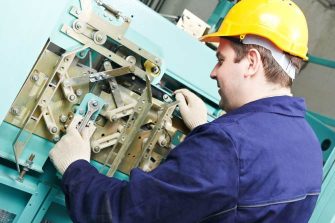Comprehensive Overview to Lift Equipments and Their Upkeep
Navigating the detailed world of elevator systems and their upkeep is a job that requires precision and knowledge. From the numerous kinds of elevator systems in usage to the careful adherence to safety laws, the upkeep of these upright transportation devices is a complex venture. As structures skyrocket higher and innovation advancements, the demand for a thorough understanding of elevator systems becomes progressively essential. Join us as we untangle the complexities of lift maintenance, discovering typical issues, finest practices, and innovative technologies that shape the modern-day landscape of vertical transport.
Sorts Of Elevator Equipments
Elevator systems come in different types, each made to suit details building needs and customer needs. The most usual types include hydraulic lifts, traction lifts, machine-room-less elevators, and vacuum cleaner elevators. Hydraulic elevators are excellent for low-rise buildings and make use of a hydraulic piston to relocate the elevator car. Traction elevators, on the various other hand, are much more matched for skyscrapers and use steel ropes and counterweights to move the car. Machine-room-less elevators are a space-saving choice as they do not call for a different machine room for the elevator equipment. Vacuum cleaner lifts, a more contemporary technology, usage atmospheric pressure differentials to relocate the cars and truck within a clear tube.
Each type of elevator system has its own benefits and negative aspects, making it critical for structure proprietors and designers to meticulously consider their details requirements before picking one of the most ideal option. Variables such as constructing elevation, space schedule, power efficiency, and budget constraints all play a considerable duty in identifying the most effective elevator system for a certain structure.
Typical Maintenance Concerns
Routine upkeep of elevator systems is essential to guarantee smooth operation and prolong their life expectancy. Regardless of routine upkeep, elevator systems can still experience common maintenance issues that require to be promptly resolved to avoid disturbances in service. Among the most regular concerns is door malfunctions. Lift doors might get misaligned, causing concerns with opening and closing correctly. This can trigger hold-ups and safety risks, calling for immediate interest from upkeep specialists. An additional common issue is associated with the elevator's leveling precision. Passengers might experience tripping risks and pain if the lift does not straighten correctly with the floorings. In addition, concerns with the control system, such as sensor troubles or electric problems, can cause the lift to malfunction or quit functioning altogether. Normal examinations and aggressive upkeep can aid determine and settle these typical maintenance issues prior to they rise and affect the general efficiency of the elevator system.
Safety Rules and Conformity
Abiding by stringent safety and security laws and making sure compliance with industry criteria are vital for preserving the operational integrity of lift systems. Elevators are subject to a comprehensive set of safety policies to protect travelers, maintenance workers, and the public. Governing bodies such as the Occupational Safety And Security and Health Administration (OSHA) in the USA and the European Lift Organization (ELA) in Europe establish standards that cover different facets of elevator style, maintenance, operation, and setup.
Compliance with these guidelines is not just a lawful requirement but likewise an ethical obligation for structure proprietors and elevator maintenance business. Normal evaluations, maintenance checks, and adherence to security procedures detailed in the guidelines are vital to guarantee the risk-free and reliable operation of lift systems.
Finest Practices for Maintenance

Building owners must also think about spending in innovation upgrades to boost the effectiveness and safety of their elevator systems. By adhering to these ideal methods, elevator systems can operate smoothly and safely, giving trusted upright transportation for owners.

Advanced Technologies for Effectiveness
Implementing advanced innovations in lift systems can significantly enhance functional efficiency and traveler experience. lift engineer course. One of the essential improvements in lift technology is the introduction of destination control systems. These systems allow guests to input their desired flooring before going into the lift, which then guides them to the most efficient car. By enhancing and minimizing unnecessary quits traveling paths, location control systems lower wait times and blockage in high-traffic structures.
Furthermore, the combination of wise sensors and predictive upkeep capacities has actually reinvented elevator upkeep. These sensors can discover potential issues prior to they rise, making it possible pop over to these guys for aggressive upkeep interventions and reducing downtime. Furthermore, the use of regenerative drives and energy-efficient parts helps in reducing power consumption and operating expense in elevator systems.
Moreover, the application of cloud-based surveillance and remote diagnostics permits real-time tracking of elevator efficiency and instant troubleshooting of any type of malfunctions. This positive strategy not only enhances system dependability but also improves the general customer experience by making certain nonstop and smooth elevator procedures.
Conclusion
To conclude, recognizing the different sorts of elevator systems, common upkeep issues, safety regulations, finest maintenance practices, and advanced technologies for efficiency is vital for guaranteeing the smooth operation of lifts. By adhering visite site to safety and security guidelines go to this website and applying best practices for maintenance, structure proprietors can prolong the lifespan of their elevator systems and guarantee the safety of passengers. It is very important to remain upgraded on the current advancements in lift modern technology to enhance performance and integrity.
The most usual kinds include hydraulic lifts, traction lifts, machine-room-less lifts, and vacuum cleaner elevators. Hydraulic lifts are suitable for low-rise buildings and use a hydraulic piston to move the elevator car. Machine-room-less elevators are a space-saving choice as they do not require a separate machine space for the lift equipment. Normal examinations and positive maintenance can aid recognize and fix these usual upkeep problems prior to they intensify and influence the overall efficiency of the elevator system.
